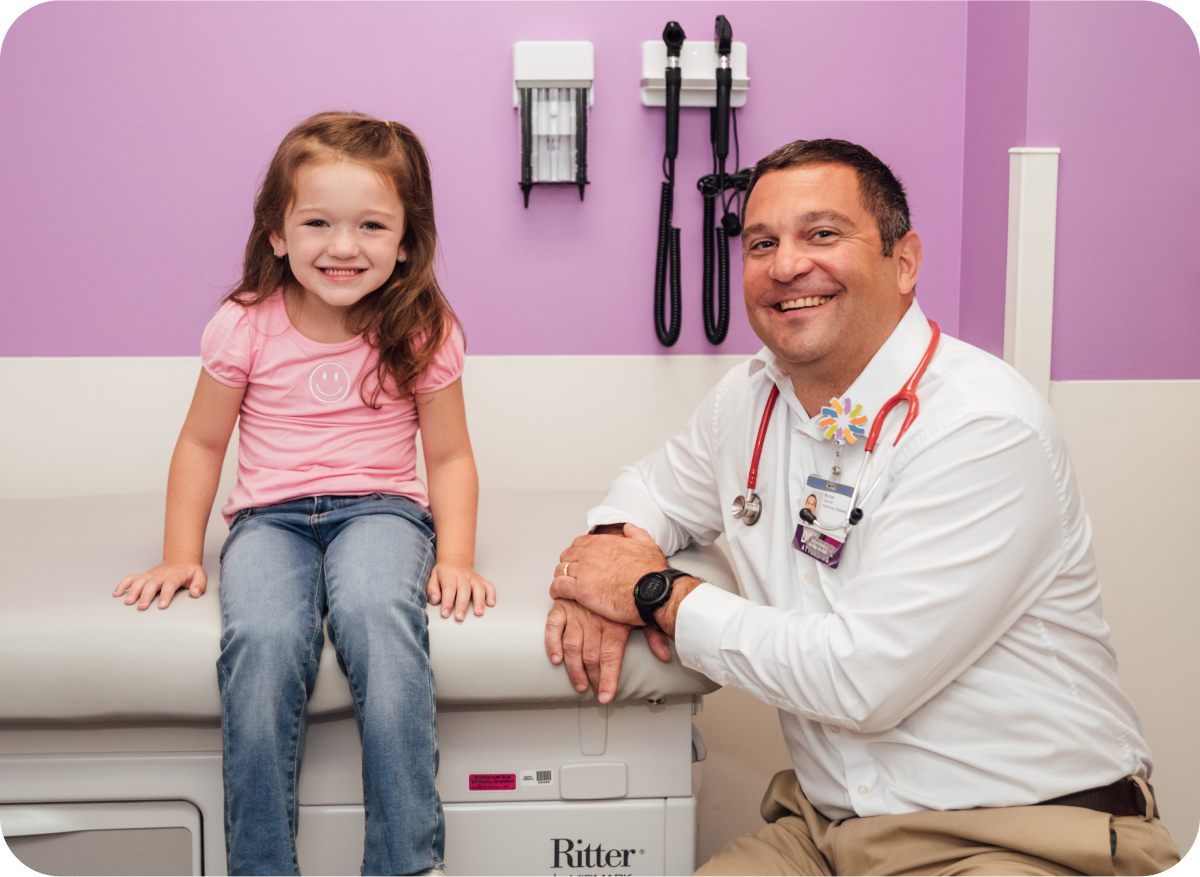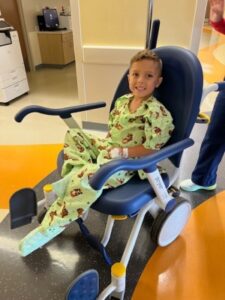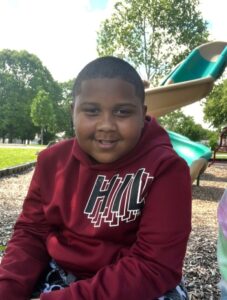Lexi Ward
Lexi gets back to doing what she loves with ApiFix surgery

- patient name: Lexi Ward
- patient age: Teen
- condition: Scoliosis
- seen in: Orthopedics, Spine surgery
- providers: Michael Albert, MD (chief, division of orthopedics), Spine nurse navigator (Dayton Children’s)
Scoliosis screening becomes a regular part of a child’s well-child visit beginning at 5 years old. As part of the routine examination, the provider will ask the child to bend over to see if there’s any curve to their spine. They’ll also check the child’s posture and examine whether one shoulder blade is higher or more prominent than the other.
It was at this 5-year-old well visit, that Lexi Ward first heard about scoliosis. Her pediatrician noticed a slight curve and wanted to monitor her progression annually.
After several years of close monitoring and watching Lexi’s curve progress, her pediatrician referred her to Dayton Children’s U.S. News and World Report ranked orthopedics team for additional testing.
Lexi and her mom, Mindy, met with Michael Albert, MD, chief, division of orthopedics at Dayton Children’s. After an initial consultation, Dr. Albert had Lexi undergo a series of medical imaging to get a closer look at her spine. From the X-rays, Dr. Albert was able to confirm the diagnosis of scoliosis and determined the next step was for Lexi to wear a back brace while she slept.
About 20% of kids with scoliosis need to wear a back brace. The brace acts as a holding device that keeps the spine from developing more of a curve. A brace won’t make the spine straight, but it attempts to prevent the curve from progressing more to avoid surgery.
After a year of bracing, Lexi’s curve had continued to progress. It was time to look into surgery.
“when I first heard scoliosis, I was very taken aback. But I thought that it was just going to be the back brace,” said Mindy. “I never dreamed we’d have to have a major surgery on her back that would forever change her life.”
ApiFix surgery
Because Lexi had a single curve that was less than 60 degrees, she was a perfect candidate for ApiFix surgery, a new minimally invasive procedure offered at Dayton Children’s for scoliosis patients.
ApiFix offers substantial benefits over traditional fusion surgery to straighten a curved spine, including a smaller incision, faster operation and shorter hospital stay. It acts as an internal brace and naturally expands as the child grows or exercises. Recovery time from this procedure is measured in days, not months.
“Just an hour and a half after surgery, Lexi was up and walking the halls,” said Mindy. “She just had a device put in her back, major surgery and she’s sitting in a chair talking to her friends on the phone!”
Just four months after her surgery, Lexi is back to her normal activities like playing basketball and softball and even riding roller coasters! Lexi and her mom are so thankful for the ApiFix treatment option for scoliosis.
“I can’t say enough thanks to the people that made ApiFix possible for my daughter and the kids in our region,” said Mindy. “This ApiFix device changed our lives and I think it’ll continue to change many other kids’ lives, too.”
Learn more about the spine and scoliosis program at Dayton Children’s or make an appointment to see one of our orthopedic surgeons (no referral necessary).
have questions about ApiFix?
Our spine nurse navigator is here to help! Schedule a free 30-minute consultation with our spine nurse navigator to learn more about the ApiFix procedure and whether your child is a good candidate for the minimally invasive surgery.
Lexi gets back to doing what she loves with ApiFix surgery
Hear from Lexi and her mom about their experience with ApiFix and Dayton Children’s U.S. News and World Report ranked spine team.
share your story
Every patient journey at Dayton Children’s is powerful — from NICU miracles to courageous cancer survivors and beyond. These patient stories not only celebrate our families but also offer hope and encouragement to others facing similar challenges. Share your experience today and help inspire, support, and celebrate the strength of our patients and families.

care that goes above and beyond
Because every child deserves care that goes above and beyond, Dayton Children’s provides compassionate, expert care for kids of all ages. Find a provider, schedule an appointment, or learn more about conditions we treat today.




